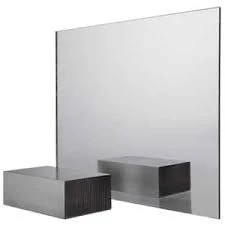

The Importance and Applications of Float Glass Panels
Float glass, widely regarded for its clarity and optical quality, plays a pivotal role in various industries, ranging from architecture to automotive manufacturing. This article delves into the significance of float glass panels, exploring their production process, features, and an extensive range of applications.
Production Process
The production of float glass is a meticulously controlled process that begins with the careful selection of raw materials, primarily silica sand, soda ash, and limestone. These components are melted in a high-temperature furnace, where they form a molten glass. The critical step in float glass manufacturing is its unique floating process. The molten glass is poured onto a bed of molten tin, allowing it to spread out evenly and form a smooth, flat surface. Due to the difference in density, the glass floats on top of the tin, creating a uniform thickness.
Once cooled, the glass is cut into panels of various sizes, polished, and inspected for quality. The outcome of this process is a sheet of glass characterized by exceptional flatness and clarity, making it ideal for numerous applications. Additionally, float glass panels can be further treated or coated to enhance their performance, such as improving thermal insulation or increasing resistance to UV rays.
Key Features
Float glass panels are distinguished by several key features that contribute to their widespread use. Firstly, their remarkable optical clarity allows for minimal distortion of images, making them suitable for applications where transparency is paramount. In addition, float glass has excellent uniformity in thickness, which is crucial for achieving the desired aesthetic and functional qualities in various installations.
Moreover, float glass panels can be manufactured in different thicknesses, ranging from a few millimeters to several centimeters, providing versatility to meet specific needs. The glass can also be tempered or laminated, resulting in enhanced durability and safety, which is particularly important in environments where the risk of breakage exists.

Applications
The versatility of float glass panels is evident in their wide array of applications. In the architectural industry, they are widely used for windows, facades, and glass doors, offering natural light and aesthetic appeal while maintaining energy efficiency. Modern buildings often utilize large glass panels that create stunning visual effects, promoting a feeling of openness and connection with the outdoors.
In the automotive sector, float glass is essential for manufacturing car windshields and windows. The clarity and durability of float glass ensure driver and passenger safety while providing unobstructed views, a critical factor in vehicle design. Furthermore, advancements in glass technology have led to the production of self-tinting and laminated glass, enhancing performance and comfort for users.
Beyond architecture and automotive applications, float glass is also prevalent in the furniture industry, particularly for tabletops and shelves. Its aesthetic qualities complement modern design trends, while the option for tempered glass provides safety in high-traffic areas.
The electronics industry has also embraced float glass, particularly for screens in televisions, computers, and smartphones. The smooth surface and optical clarity are essential for high-definition displays, making float glass a cornerstone material in tech development.
Conclusion
Float glass panels represent a harmonious blend of functionality, aesthetics, and versatility. From their complex production process to their various applications in architecture, automotive, furniture, and electronics, float glass panels are indispensable in contemporary society. As technology advances, the future of float glass promises even more innovations, catering to the evolving needs of consumers and industries alike. Its enduring appeal lies not only in its practicality but also in its ability to transform spaces, making light and transparency integral components of modern design.